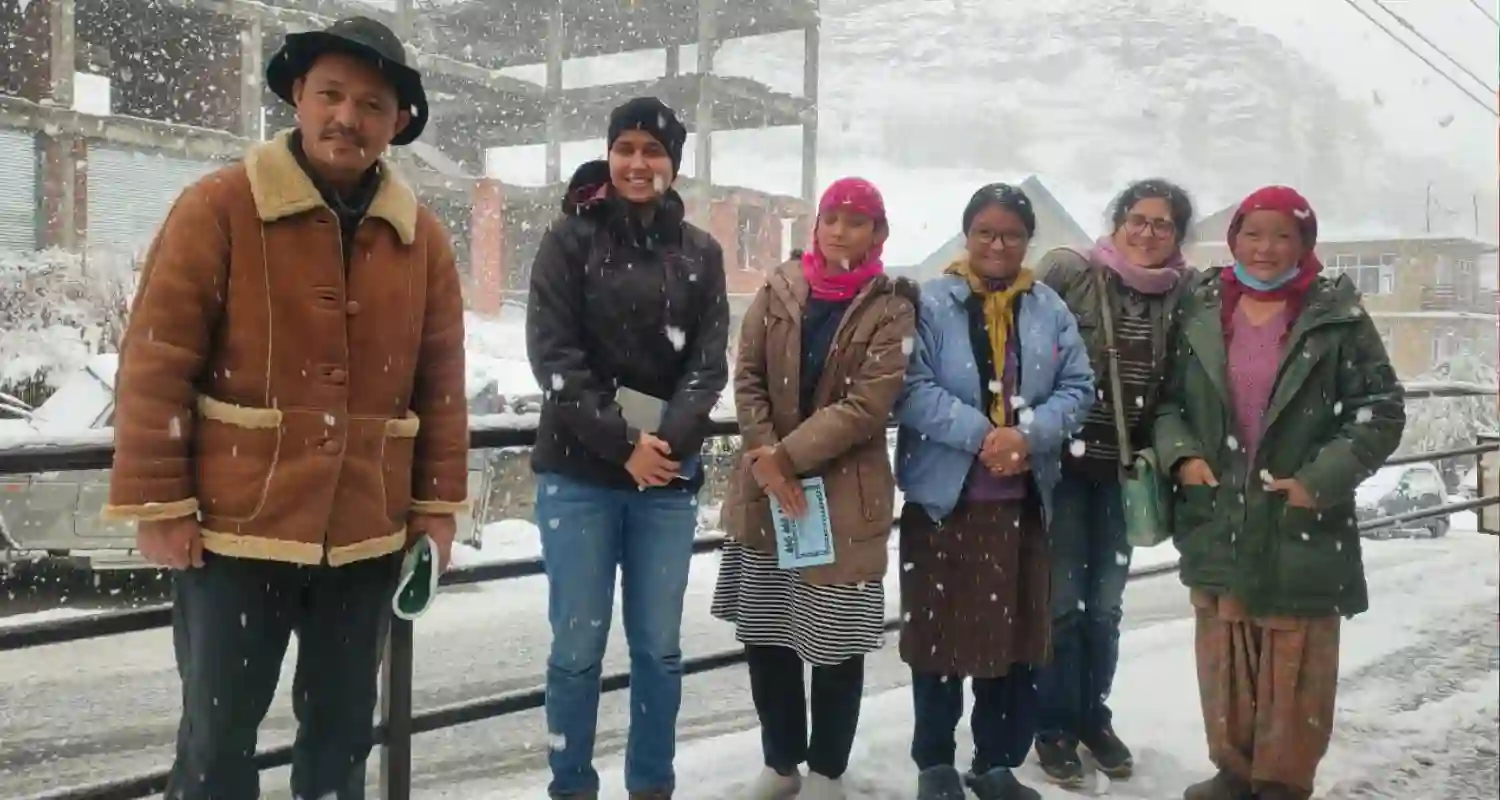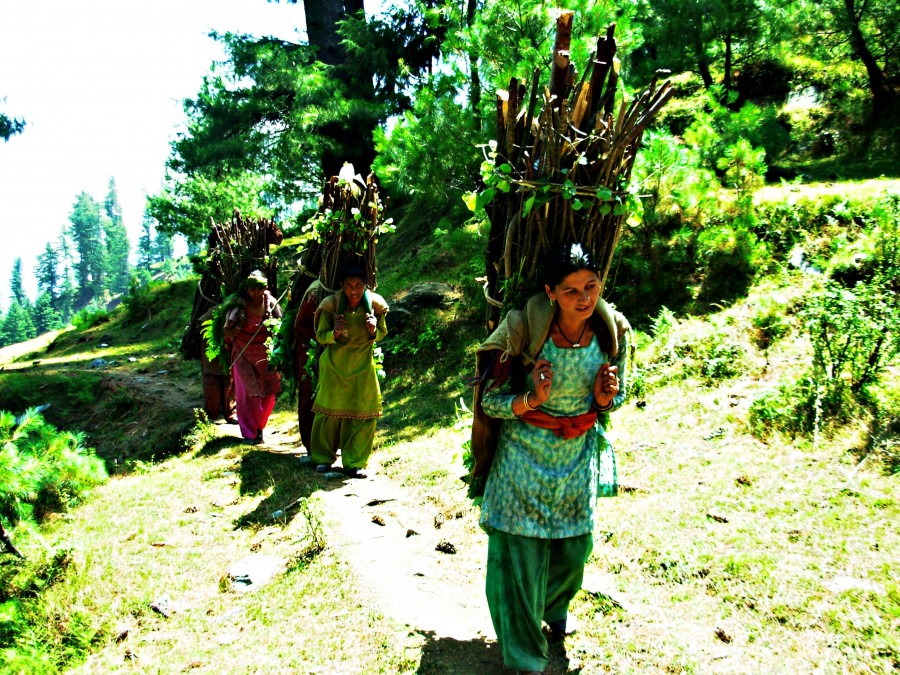A documentary film by Himdhara Collective based in Himachal Pradesh narrates the story of forest rights and traces the unrecognized efforts of the community in forest conservation policies in Lahaul Valley in HP.
Bano Haqq Kathare, a story of forest rights, is a 44-minute recent documentary film in Hindi by Himdhara (an environment research and action collective based in Himachal Pradesh) on the diminishing role of the community in the management of forests in the hill state, with reasons rooted in the indifferent system in the present times.
It traces the collective efforts of Mahila Mandals (women groups) in the Trans Himalayan Lahaul valley in Himachal Pradesh to govern forests over three decades, striving for a shared guardianship of the commons. Yet the labour they put in remains unrecognized in the state’s development and conservation policies or programmes.
The documentary film, directed by Manshi Asher, an environment researcher and cofounder of Himdhara, talks of the non-implementation of the Forest Rights Act 2006 and its importance as a measure of recognizing the role of local communities, especially Mahila Mandals as common custodians of the forests.
(The documentary film is produced by Himshi Singh, Sumit Mahar and Upkar Singh).
Asher said like other high Himalayan regions, the widespread pastures, forests and farmlands were an integral part of nature and day-to-day life in this cold desert area. “However, with the passage of time, the community has been reduced just as daily wagers in the plantation drive. They are not involved in the maintenance or management of forests. If they are involved, it would certainly lead to better maintenance,” she said.
The documentary film, which is based on the observations of lots of locals, including women, in Lahaul and the field scenario picturises shift in socio-ecological systems, particularly local relationships with the commons since the colonial times, when the British Empire took over the forests for commercial exploitation. It highlights that post-independence, the high demand for timber and fuel wood by the local administrators with the establishment of the district headquarters of Lahaul at Keylong led to stress on the local forest resources.
A catastrophic avalanche in the year 1979, a six-day ordeal during the Fagli festival in the Lahaul Valley, is etched as a painful memory into the collective consciousness of the Lahaul Valley. The calamity resulted in the complete annihilation of two villages, while several other settlements suffered substantial damage and loss of human and livestock. The aftermath of the 1979 avalanches and the looming threat of future climate disasters in the Tod and Chandra valleys compelled the locals to regulate the use of the remaining temperate forests.
The documentary relates that the presence of forests played a crucial role in preventing slab avalanches, drifting of snow, massive snow slides and stabilization of snow temperature, averting further avalanche triggers.
So the Mahila Mandals, local women’s groups, took up the task of regulating forest usage within their village boundaries, protecting not only their communities but also their neighbouring counterparts. As a spin-off, other villages also started closing down their forest boundaries, evolving systems of regulated use of niche species like Junipers.
The documentary highlights that the protection measures combined with the traditional agroforestry practices, that led to willow plantations to fulfill fodder needs, took the pressure off the forests to some extent. It explains that the forest department’s initiatives in afforestation, however, such as the Desert Development Program and the Sanjhi Van Yojana, were often regarded as failures, especially when implemented without community involvement.
The local forest governance initiatives spearheaded by women, though, yielded positive results, including the recognition of juniper forests as trees, the outcome varied among different villages. Some reported increased forest cover, while others maintained the status quo.
The success of these initiatives was instrumental in averting catastrophic events like 1979.
The documentary film explains how the 1980 Forest Conservation Act and subsequent forest regulations of the State and Centre restricted local access to forest lands, especially the distribution of land under Nautor schemes, essential for habitation and farming to landless and marginal farmers. It stresses that the forest department’s influence is evident in the hurdles it raises in the implementation of the Forest Rights Act 2006 in the region and the state as a whole.
Asher said this law aimed at strengthening forest governance through livelihood dependence and conservation but was systematically undermined by bureaucratic and political forces. “The agencies like United Nations Development Programme (UNDP) and Japanese International Cooperation Agency (JICA) bringing in climate adaptation funding to the region have also not addressed the issue of forest rights and tenure, failing to emphasize the need for decolonizing forest governance and establishing shared custodianship with the forest-dependent communities,” she said.
News Link






